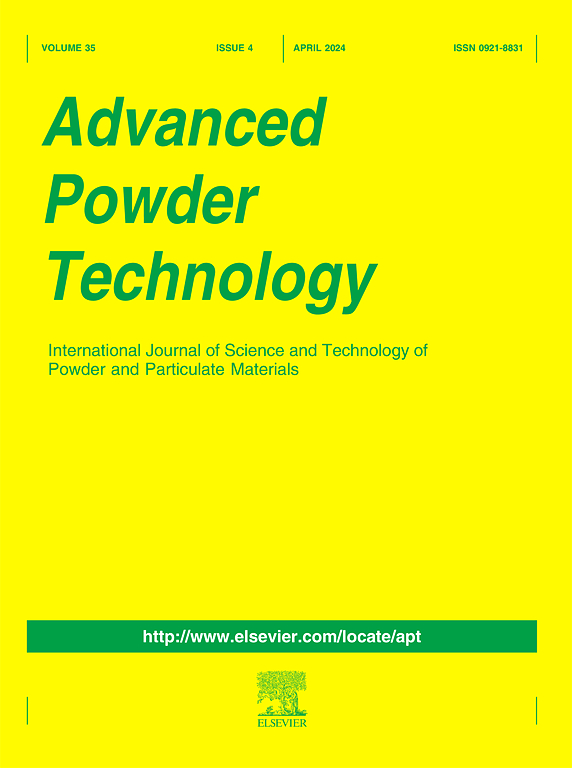二次空气流化床中二元颗粒混合偏析特性的CFD-DEM研究
IF 4.2
2区 工程技术
Q2 ENGINEERING, CHEMICAL
引用次数: 0
摘要
二次进气是流化床生物质气化中一种有效的减焦油方法。然而,二次进风对流化床颗粒运动的影响机理尚未完全了解。建立了CFD-DEM模型,研究了二次喷气流化床中二元混合物的分离和混合特性。研究发现,二次风的引入改变了流化床内原有的气泡形态,在流化床内形成涡流,加快了颗粒的循环速率。二次空气的注入有可能提高混合的速度和指数,特别是在喷嘴平面以上的区域。在实验条件下,二元混合物在流化床内的混合性能存在最佳二次空气与总空气比(SATR)。另一方面,二次空气的引入和相应的一次空气速度的降低可以导致二元混合物在喷嘴平面以下更好的偏析,从而形成两个具有非常不同的混合/偏析特性的层。本文章由计算机程序翻译,如有差异,请以英文原文为准。

CFD-DEM study on mixing and segregation characteristics of binary particles in a fluidized bed with secondary air
Secondary air intake has been suggested to be an efficient tar reduction method for fluidized bed biomass gasification. However, the influence mechanism of secondary air intake on the particle motion in the fluidized bed has not been fully understood. A CFD-DEM model was developed to investigate the segregation and mixing characteristics of binary mixture for a fluidized bed with secondary air injection. It was found that the intake of secondary air could change the original bubble pattern in the fluidized bed and form vortexes in the bed, accelerating the circulation rate of particles. The injection of secondary air has the potential to improve the speed and index of mixing, especially in the area above the nozzle plane. For the studied conditions, there is an optimum secondary air to total air ratio (SATR) for the mixing performance of binary mixture in a fluidized bed. On the other hand, the introduction of secondary air and relevant reduction in primary air velocity can lead to a better segregation of the binary mixture below the nozzle plane thus creating two layers with very different mixing/segregation characteristics.
求助全文
通过发布文献求助,成功后即可免费获取论文全文。
去求助
来源期刊

Advanced Powder Technology
工程技术-工程:化工
CiteScore
9.50
自引率
7.70%
发文量
424
审稿时长
55 days
期刊介绍:
The aim of Advanced Powder Technology is to meet the demand for an international journal that integrates all aspects of science and technology research on powder and particulate materials. The journal fulfills this purpose by publishing original research papers, rapid communications, reviews, and translated articles by prominent researchers worldwide.
The editorial work of Advanced Powder Technology, which was founded as the International Journal of the Society of Powder Technology, Japan, is now shared by distinguished board members, who operate in a unique framework designed to respond to the increasing global demand for articles on not only powder and particles, but also on various materials produced from them.
Advanced Powder Technology covers various areas, but a discussion of powder and particles is required in articles. Topics include: Production of powder and particulate materials in gases and liquids(nanoparticles, fine ceramics, pharmaceuticals, novel functional materials, etc.); Aerosol and colloidal processing; Powder and particle characterization; Dynamics and phenomena; Calculation and simulation (CFD, DEM, Monte Carlo method, population balance, etc.); Measurement and control of powder processes; Particle modification; Comminution; Powder handling and operations (storage, transport, granulation, separation, fluidization, etc.)
 求助内容:
求助内容: 应助结果提醒方式:
应助结果提醒方式:


